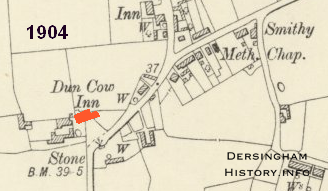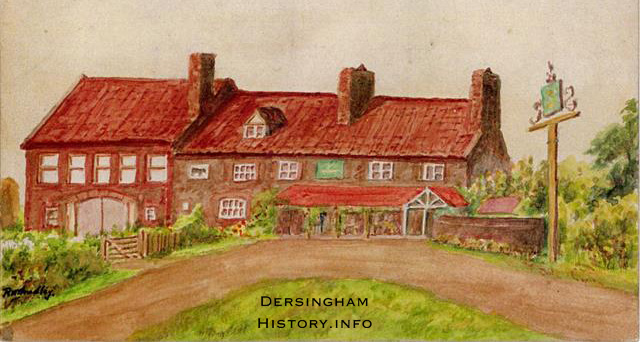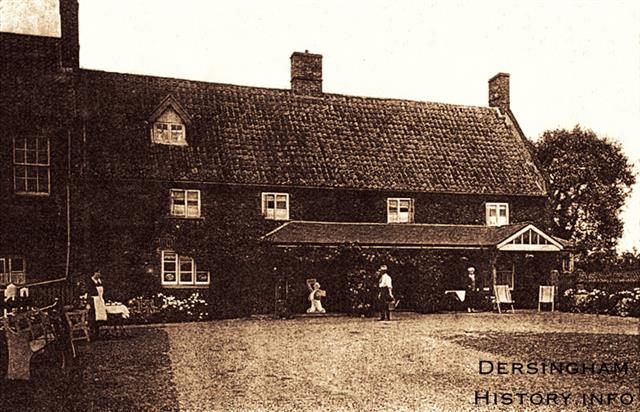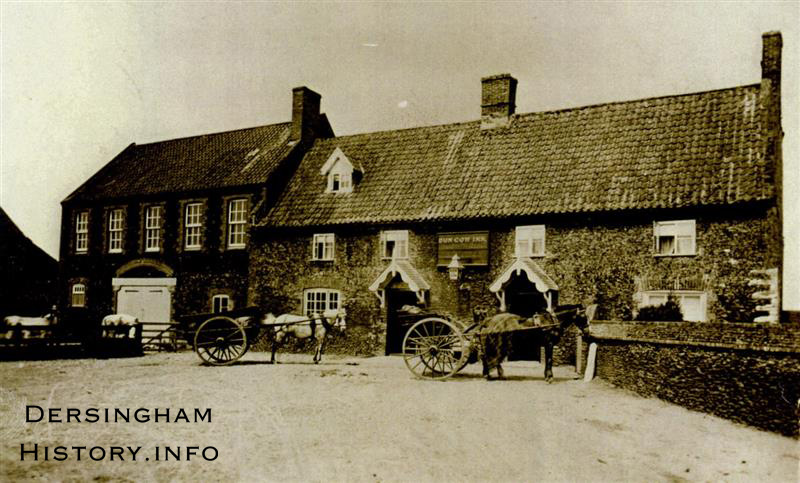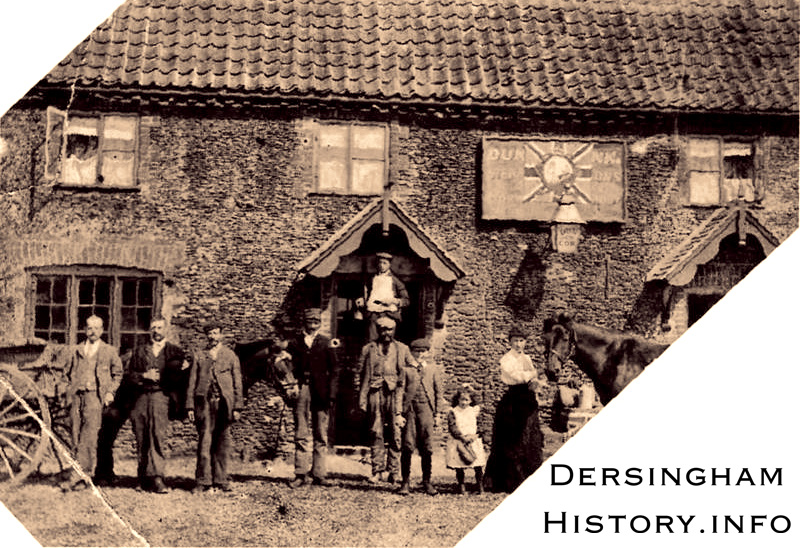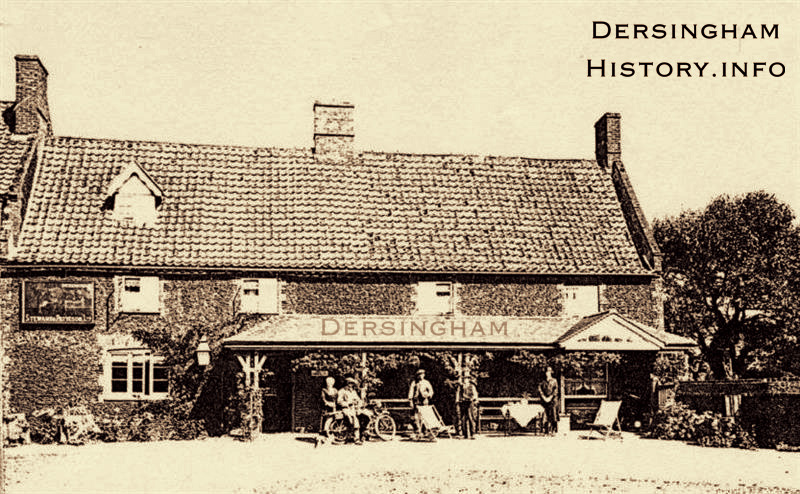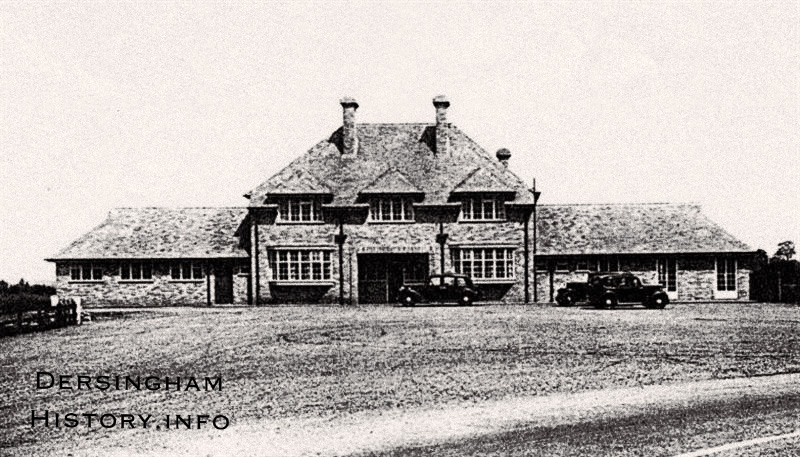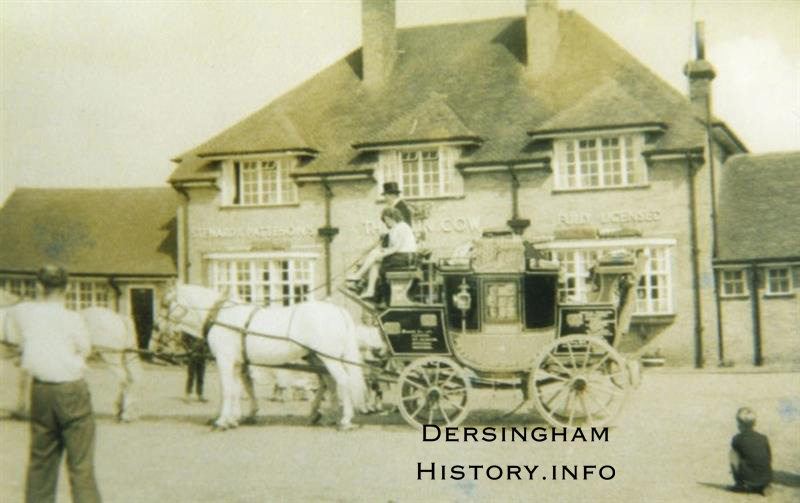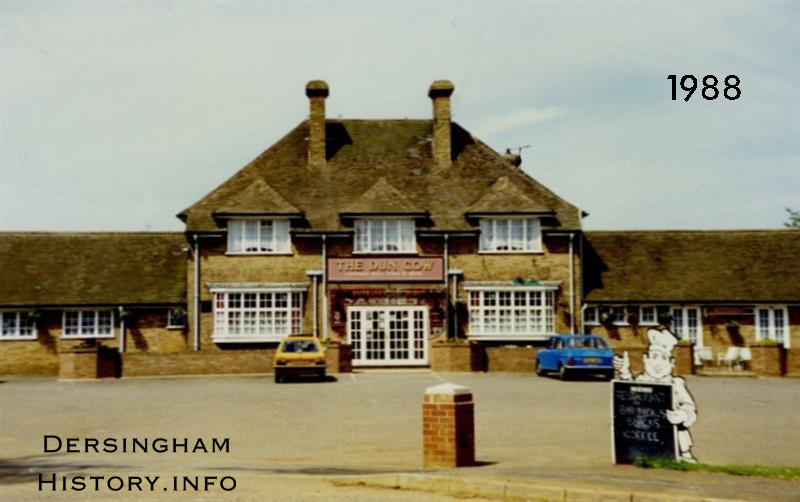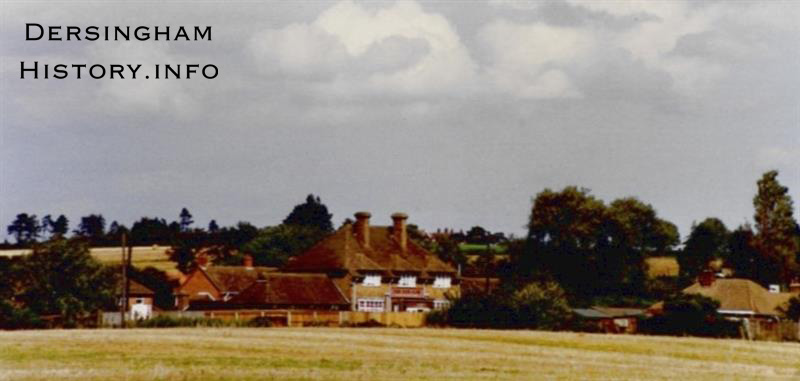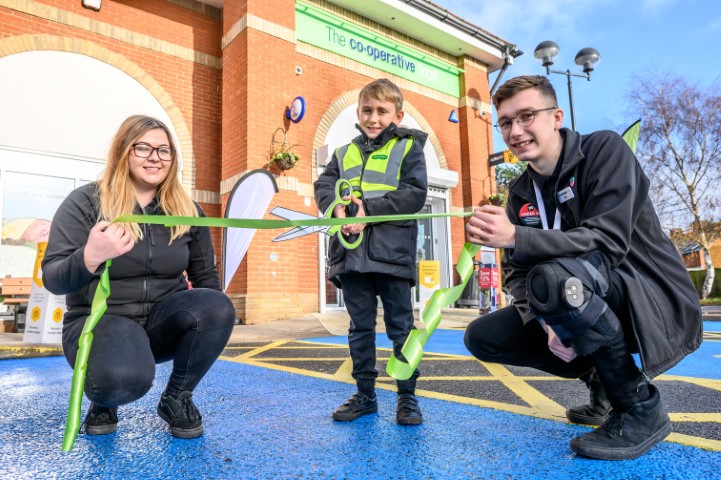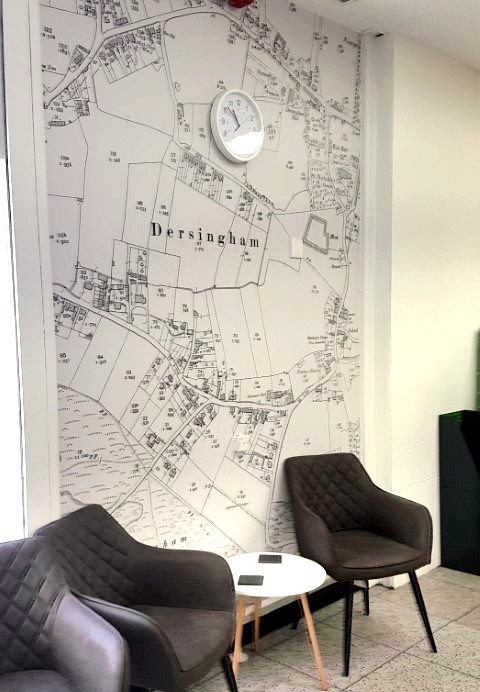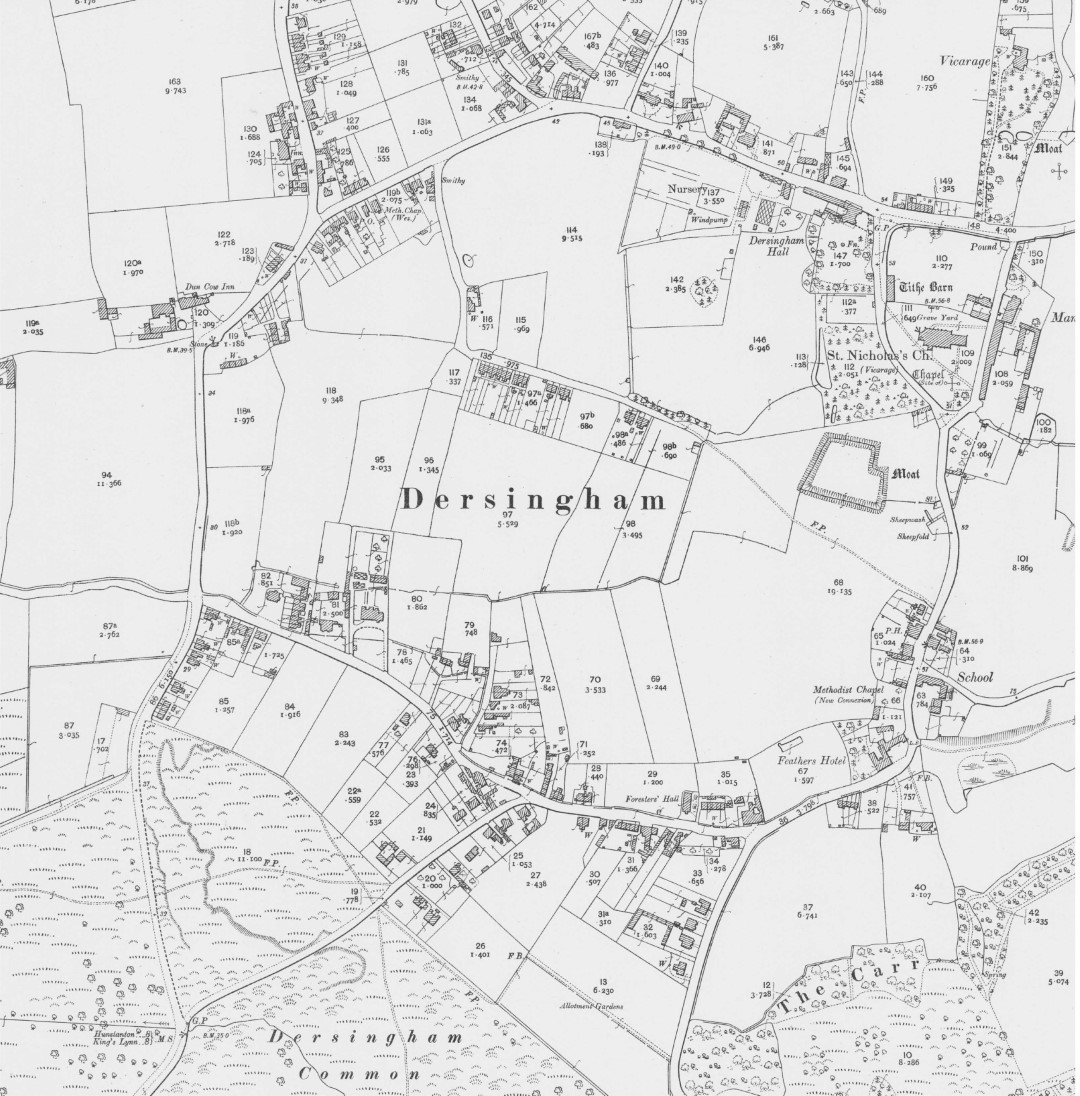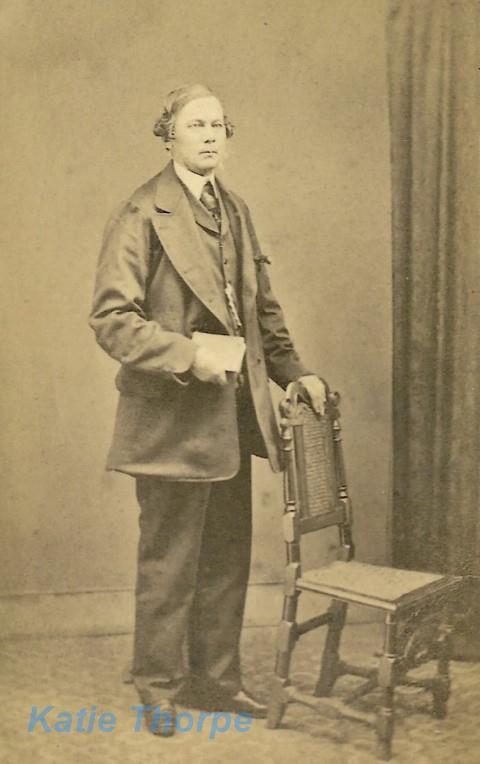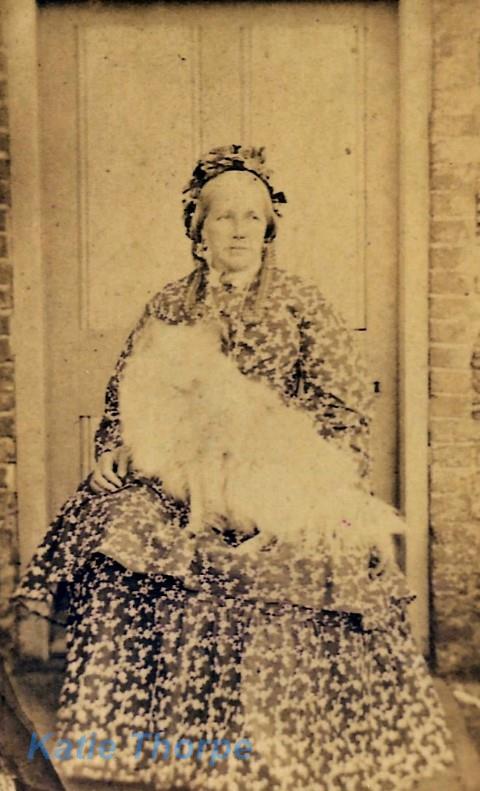Family Story from Katie Thorpe (15 Feb 2020)
My John Smith was born (I think) in Lynn in 1819 to Francis Smith (b1798 Dersingham), a cordwainer, and Mary Cross (same). I believe he grew up in Dersingham/West Newton as his siblings were christened there rather than Lynn. In April 1847 he married Catherine Grimes at West Newton, and for some time he was a shoemaker/cordwainer as well. They had only one child, Mary Ann Smith born December 1848.
By the 1871 census he was with his parents and his family in West Newton at the "Three Tuns", along with a lodger, Joseph George Rainbow, upholsterer. Francis Smith was running the "Three Tuns" as of1861.
Joseph Rainbow married Mary Ann Smith September 22, 1872 at Dersingham. Joseph was employed at Sandringham starting in 1873, eventually in charge of furnishings; he travelled to Denmark several times in Queen Alexandria's entourage in that capacity. (I have some pictures). He built a house in Dersingham he called "The Retreat" which still stands (my sister has the address I believe). But he's another story.
In 1881 and 1891, John and Catherine Smith were at the "Dun Cow" in Dersingham with some of their Rainbow grandchildren present, and sometimes one was employed as a barmaid. Both passed away before the 1901 census.
Daisy Rainbow (b 1884) was my paternal grandmother, and lived with us while I was growing up. She remembered the Dun Cow well and her grandparents - I got the impression that it was Catherine (Grimes) Smith that was the driving force in the family. I have her cookbook, signed "Kate Smith, Three Tuns" - Warne's Model Cookery and Housekeeping Book" 1869 edition.
Cheers, Katie.


